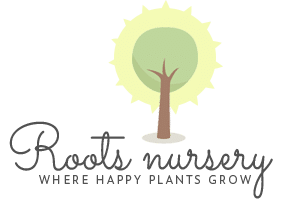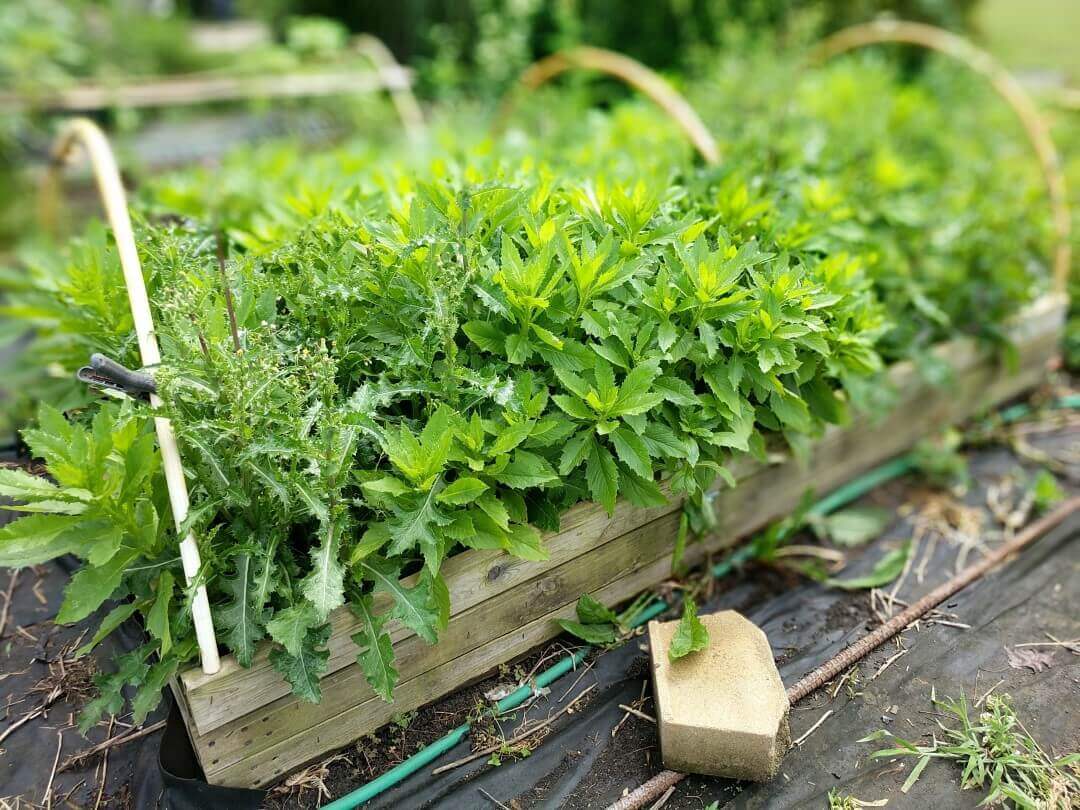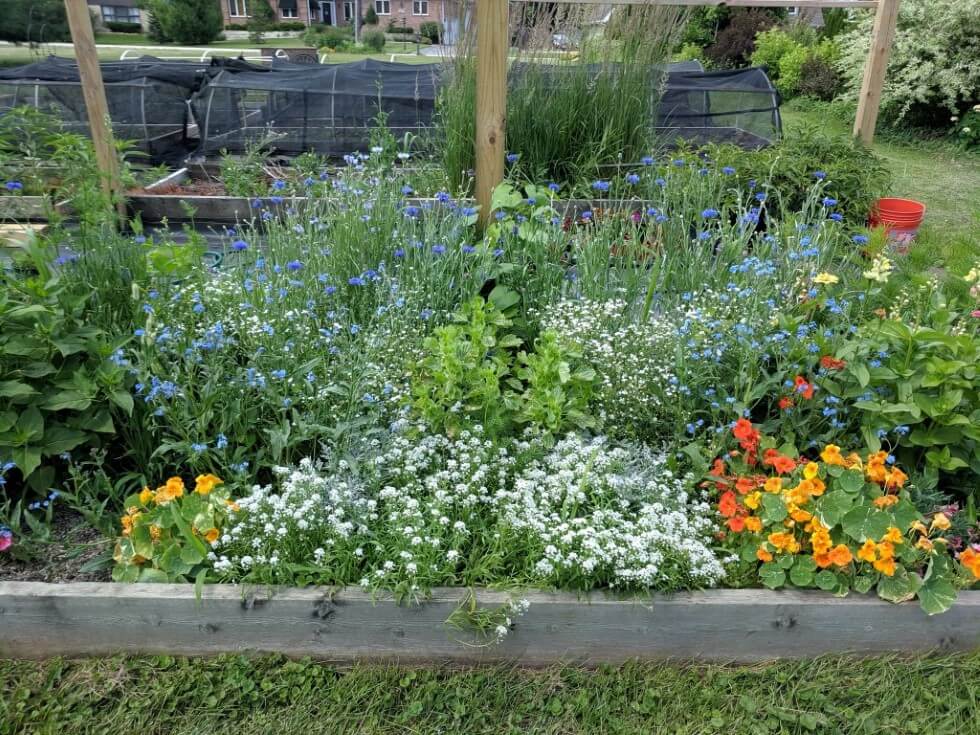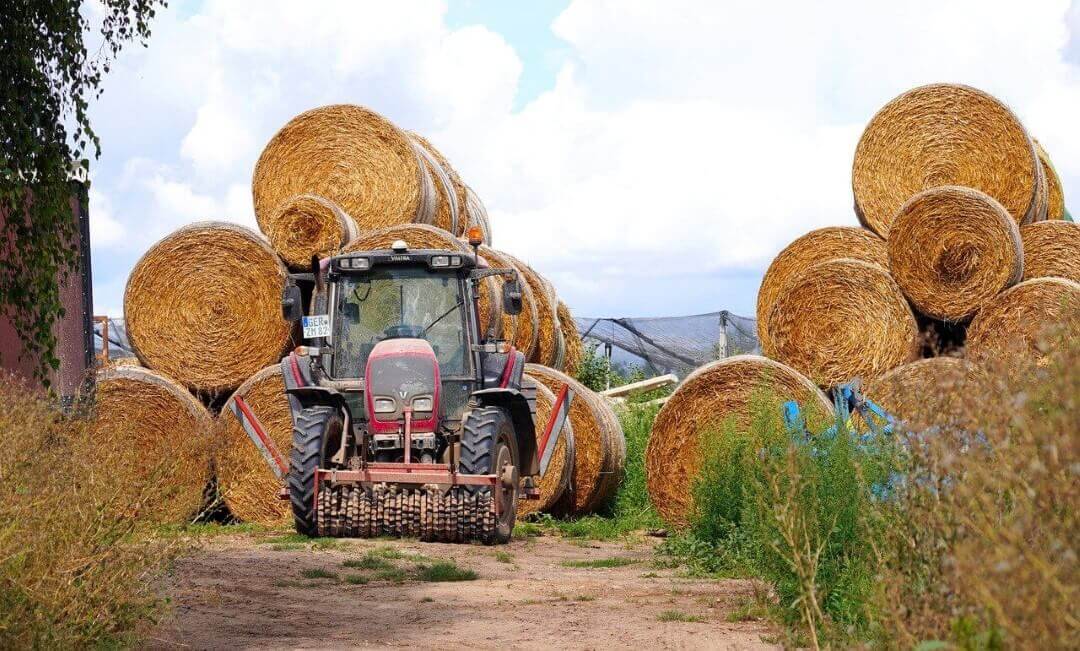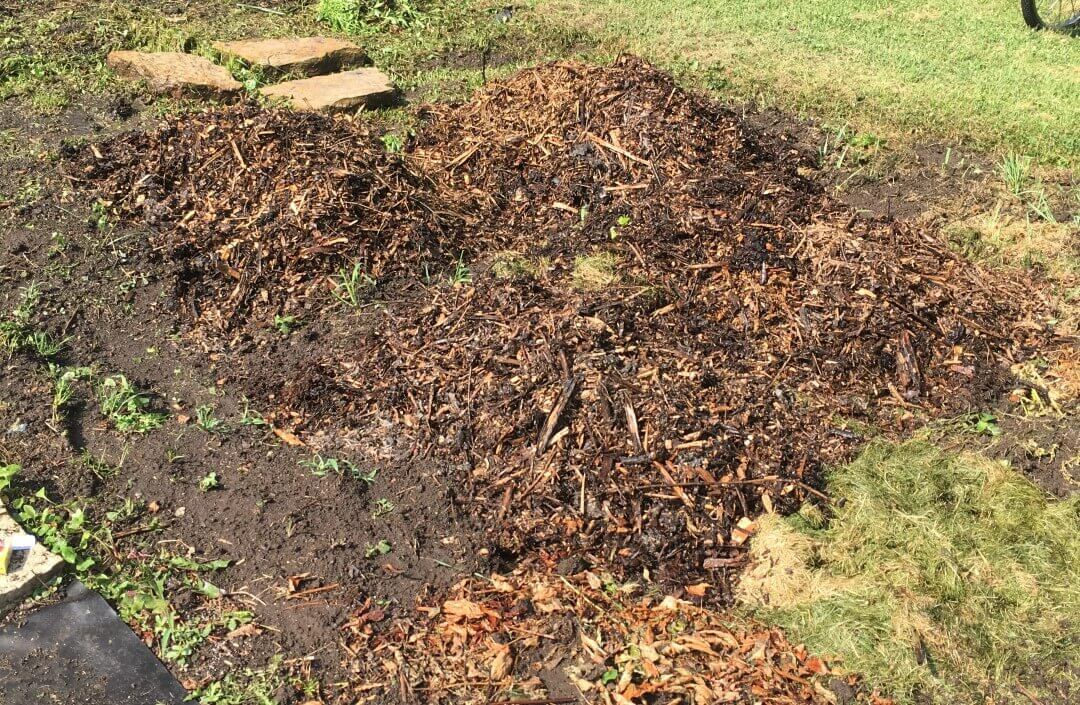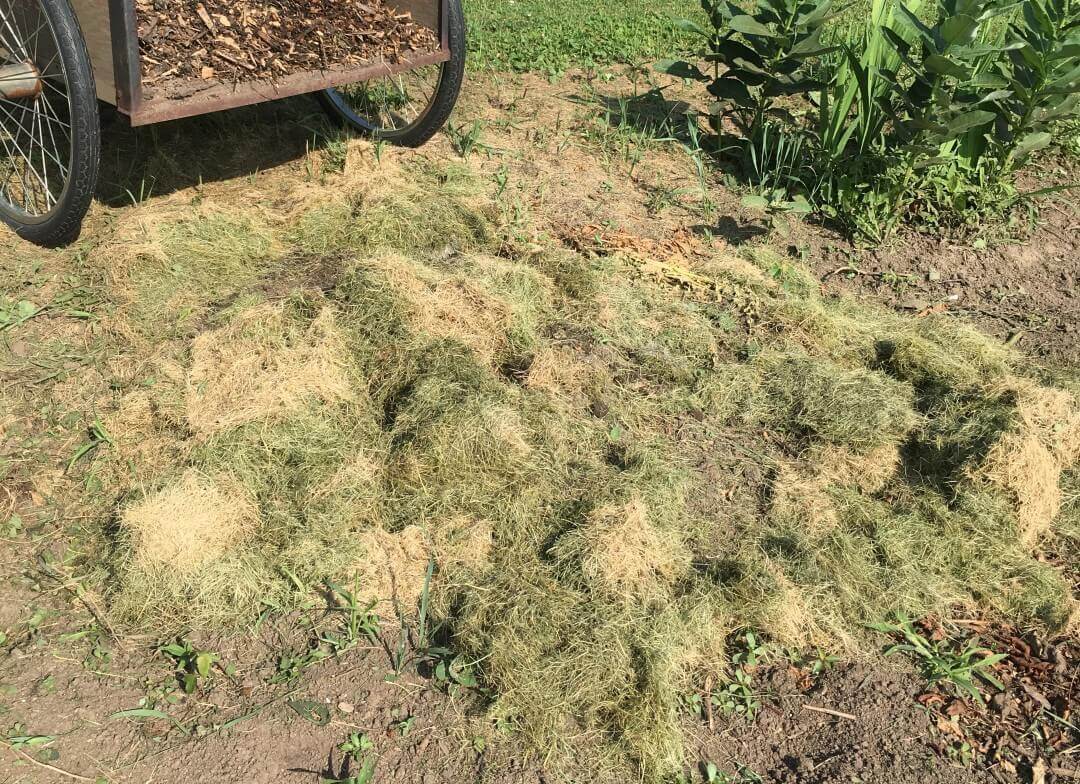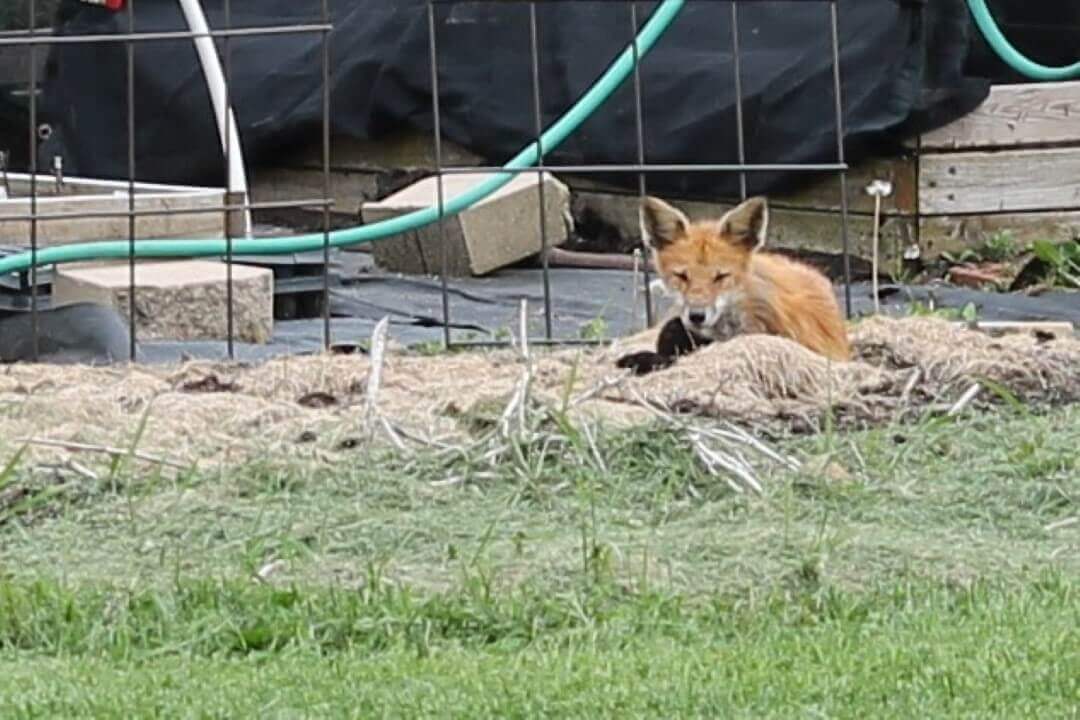No Work gardening. Ahhh, doesn’t it sound delightful? How much freedom we’d have to laze around, enjoying the outdoors, if the garden could take care of itself. And if that’s possible, tell me how.
Ruth Stout figured it out and has been teaching her gardening method since 1955. She grew ALL of her own vegetables well into her 90’s without digging, weeding, watering, or any hard work at all.
the Secret… Hay!
Spoiled hay in fact. And lots of it.
Ya see Ruth’s answer was very very simple. She mulched. But her method met a bit of resistance. She’s talked exhaustively on this subject – teaching workshops, writing numerous books and articles, showing a plethora of visitors through her garden over the years. It seems that some people were not inclined to listen.
Imagine agriculture in the 1950s. Before no-till, before ‘organic’, before conservation and restoration. You wouldn’t consider growing without nitrogen fertilizer. Airplanes swept the fields with poison insect killers (crop dusting is still in practice to this day). The plow was the farmer’s best friend. This was when things were done a certain way, and that was that.
But Ruth had always been on the radical side. She questioned things, thought for herself, and did what she wanted. Some stubborn farmers with beliefs of steel wouldn’t even come close to stopping her. Her method worked and the world needed to know about it. Ruth passed in 1980 at the ripe old age of 96. Considering that we’re still talking about her to this day, she must have done something right.
What is the Ruth Stout Method?
In short, the Ruth Stout Method uses spoiled hay as a mulch. A generous application of hay smothers weeds, retains moisture, fertilizes the soil, and grows healthy plants, leaving no work in the garden aside from sowing seeds and harvesting vegetables.
Does it work?
So many people have succeeded with this method throughout the years. I’ve also seen some YouTubers that have failed, but that doesn’t mean it doesn’t work.
In my personal experience, this method works very well. In our heavy clay soil and heavy weed pressure, only two methods grow great plants. Raised beds OR a heavy load of compost.
It cuts down on weeding and watering and grows beautiful, healthy plants that need no fertilizer or insect sprays. The only drawback is that you need quite a lot of material to get started.
Did Ruth Stout use Hay or Straw?
Ruth Stout used Hay. She was particular to ‘spoiled’ hay that had been exposed to the elements and began to rot. There’s a very specific reason that hay was Ruth’s mulch of choice. It makes for excellent fertilizer. Moreso, not only does it smother weeds, it retains water while also feeding plants effectively. Experiments show that spoiled hay grows more sizeable plants than fresh hay.
There’s an important distinction between hay and straw that might be making the difference between success and failure. Knowing the basics of the material itself.
Hay is grown for animal feed. It’s cut while young, still green, and before it has gone to seed. Hay is ‘green’ material. If you’ve composted you know that green materials are a source of nitrogen. Nitrogen helps grow strong, healthy plants.
Straw is grown for seed grain. It’s harvested when the plant is no longer green. After the grain has been harvested, straw is what’s leftover. Straw is ‘brown’ material. Brown materials are a good source of carbon. Carbon is needed for a healthy soil structure.
ANY organic material helps plants grow strong and healthy but the extra boost of nitrogen obtained from Hay might prove to be more beneficial.
What other mulch or compost can I use?
Can’t get your hands on hay? There are so many materials you can use. The gardener’s motto is ‘use whatever you can get’. Mulching with ANY organic material works, it doesn’t even have to be broken down.
I’ve used every single material I can get my hands on. Woodchips, grass clippings, leaves, and leaf mulch, used coffee grounds, kitchen scraps, newspaper, straw, pine needles… and every ounce of plant debris went into my homemade compost. (BUT remember, you don’t need to make compost if you mulch heavily.)
I’ve had the local landscaper deliver massive truckloads of debris they pulled out of other people’s yards. I’ve had the tree service deliver dump trucks full of woodchips. I’ve had my neighbors dump their grass clippings in my compost pile.
Grass clippings added to the soil grew excellent plants. My belief is that the high nitrogen content in grass clippings (just like hay) helped the plants grow faster, bigger, and stronger.
[safety tip]
When collecting large amounts of green materials such as grass clippings and hay, don’t let it sit in a pile for months. A large mounded pile becomes anaerobic (without oxygen) and emits ammonia, which smells strikingly close to cat pee.
Also, as the material dries out, yellow jackets find it an optimal habitat to build a home. These determined buggers are very eager to defend their home when someone tries to use it in their garden. They will chase you 100 feet and sting you even when you’re far away.
Here are some options to keep things smell and sting-free. (You only need to pick one)
Spread the pile flat.
Turn it often.
Mix in woodchips, leaves or other brown material.
Keep it watered.
In order to get mulch on the ground fast, I’ve utilized the ‘chop and drop’ method. While you’re trimming, pruning, or cleaning up your plants, place the cut vegetation right on the ground, next to the plant as a green mulch.
I’ve used grass clippings collected after mowing the lawn to mulch around my tomatoes. This worked fantastically. Maybe 5 weeds grew the whole summer and the tomatoes flourished. The same exact bed untreated, one year later, is jam-packed with weeds.
[personal story]
2 years ago, I dismantled my raised beds to make them larger. When I put them back together, they were empty. With all I learned about building, restoring, and preparing the soil, it was the perfect opportunity to do something a little crazy… and I was pretty sure it would work. I stuffed the empty raised beds full of yard debris from spring cleanup. All the dead growth from last year was collected and squished down into the bed. Sticks, dead ornamental grass, tall perennial flowers from last year. All of it went in. Then, I covered it with a layer of compost – whatever I had left in the pile I’d made from years past. It only stacked up to 3″ of compost… but it worked! I planted flowers and some vining veggies in those beds and they all grew fabulously. (see below)
How Much Mulch?
When asked how much mulch, Ruth Stout always responded “more”. Add 6 to 8 inches of mulch at the very minimum for the first application. Then, it must be replenished every single year. Preferably all summer, every summer. Whenever you see areas that are thinning or if weeds start to emerge their ugly heads, throw a pile of hay on top of them.
The hardest part about mulch and compost is collecting enough of the stuff. But it’s really worth it. The biology in the soil is hungry. It eats all of the organic material you can feed it faster than you can imagine.
SO, the Ruth Stout method is not 100% no work gardening. Spreading mulch is very hard work. But once you spread it, the only work left is to replenish. But remember to replenish often, multiple times, every year.
Where do you get this much Mulch?
Collecting mulch is a matter of resourcefulness. Visit your landscaping material yards. They might have a cheaper source of mulch or compost. Call your local tree specialists. They might deliver woodchips for free. Chip Drop connects you with local tree people who will deliver woodchips.
In my area, one of our tree services sells leaf mulch for $9 a yard. This gives me a little thrill inside whenever I think about how much leaf mulch I can buy whenever I want.
I don’t feel comfortable unless I have a massive pile of mulch as a resource. Considering the sheer amount of mulch your gardens are hungry for, you will quickly learn that a little is not enough. The more the better and you’ll be happy with no less than piles of the stuff.
If you live in the city, try looking for a compost program. California has a massive compost program.
If you live in the suburbs, try asking neighbors to donate their grass clippings. They might even save money on disposing of yard debris.
If you’re lucky enough to live near farmland, hay should be an easy material to resource.
Why is the Ruth Stout method superior?
Not only does Ruth’s method save time, energy, and your back! it’s very good for the soil and the environment. If you’ve heard of no-till farming, or even tried it once, I promise, you’ll never dig in your soil again. Conventional plowing destroys soil biology, causes degraded fertility, causes runoff, erosion, and the inability to hold rainwater.
Healthy soil is teeming with life, earthworms abound, it holds moisture, and grows healthy plants that are resistant to disease and pests. See Soil Conservation.
I am 100% convinced that if every gardener and farmer refrained from disturbing the soil, we’d no longer be threatened by climate change. Plants sequester carbon from the air. That means it’s no longer in the atmosphere, the carbon goes in the ground, where it belongs.
Have you seen a farm plot of brown soil with not a plant as far as the eye can see? Though it seems natural, mainly because were accustomed to seeing it, the land is supposed to be green. This practice of leaving land fallow is an example of how humans mess things up.
The more acreage there is with a live plant growing, the more carbon the plants suck out of the atmosphere and put back into the ground. I’m not the only one that believes this can reverse the damages of climate change.
Kristin Ohlson wrote an entire book about it, called The Soil Will Save Us. I love listening to Audible while gardening. Woody Harrelson hosted a documentary all about it on Netflix, called Kiss the Ground. And, most importantly, the US Department of Agriculture is promoting no-till farming as the new better way to farm.
How do I start a Ruth Stout Garden?
Shouldn’t I till the land start things off? Actually, you don’t have to. Not even kill the grass? No, really, it’s absolutely not necessary. It’s as easy as spreading the mulch. Hay will suffocate grass and weeds. That’s why she uses it. Plan out an area and dump 6-8 inches of mulch on it. Wait for it to break down a little… That’s it. Ruth promised it would be easy, and it really is.
Over the years, I’ve mulched and composted with just about every material you can think of.
When do I start a Ruth Stout Garden?
Start your Ruth Stout garden as early as possible. As soon as you can get your hands on materials – hay, or your chosen mulch – put it down on the ground. The longer your materials have to break down into the soil, the more your soil will be prepared with organic material and nutrients.
What can you grow with the Ruth Stout Method?
Everything you grow in a normal garden can be grown with the Ruth Stout method. Follow the directions on the seed packets. Timing and spacing are exactly the same.
How do I plant seeds in Hay or Mulch?
You don’t really plant your seeds directly IN the hay. Sowing seeds is just as easy as you’ve always done it. When it’s time to plant, rake the hay back from your seed rows and plant the seeds according to the package. Seeds need to make contact with the soil in order to germinate. So don’t plant them in the hay, plant them in the ground. When the seeds sprout, spread the mulch back around the plants.
If you grow your seeds in flats or buy your plants from the store, transplant your seedlings in the dirt and mulch around them with a lot of hay.
Ruth Stout Potatoes.
Potatoes are probably the most notable vegetable in the Ruth Stout method. Throw a seed potato on the grass. Cover it with hay. Come back a few months later and harvest. That’s IT! No hilling, no digging, no watering, and when you harvest, all you have to do is move the hay. You don’t even have to dig up the new potato crop. That’s amazing to me.
I love this video where Derrick and Paula practice the Ruth Stout method to grow potatoes and grew 10 times what they put in.
It’s a wonderful world of gardening when you follow Ruth. The list of things you DON’T have to do is much much longer than the things you do have to do. Imagine no more digging, tilling, plowing, hoeing, weeding, watering, fertilizing, applying insecticides, or even making compost! Spread your mulch. Sow your seeds. Wait. Harvest your vegetables. Oh, and add mulch where it’s getting thin.
Ruth Stout was a true pioneer and teacher. She wrote 9 books about her method. Her book “Gardening Without Work” outlines her experience with each of the vegetables she grows and is full of great stories through her many years of gardening, of teaching, and converting the die-hards that her way is the better way, or at least the easier way. If you want to have an easier time in your garden, give the Ruth Stout method a try.
